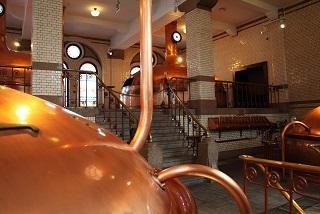
This study was conducted at Centre for Biomedical Technology of Universidad Politécnica de Madrid (UPM) and the Institute of Materials Science and the Institute of Catalysis and Petrochemistry of Consejo Superior de Investigaciones Científicas (CSIC). The results showed that the residue left after beer production was rich in contents like calcium, phosphorus, silica, etc. These were coincidently nutrients that help bones become stronger. The residue was incorporated to be used as a material in bone replacements as well as a coating in bone grafts. Not only does this material decrease the burden of the accumulated eco waste, it also provides nutrient-rich media for the treatment of bone diseases.
The mainstay of this type of treatment is a robust mold which will provide support to the existing weak bone and induce bone regeneration. This material is also used to coat prosthetic bone grafts.
During the research process, cell cultures were used to analyze the bio compatibility with the original bone cells. The adherence property of this new material was examined as well. Studies confirmed that the material proliferates and differentiates itself from mature bone cells making it unique and easy for identification with markers.
Today, orthopedic implants are coated with synthetic calcium due to their unique property of resemblance with the bone composition. These materials are formed through a series of reactions of chemicals in the presence of toxic reagents at extremely high temperatures (almost touching 1500 degree Celsius).
Bagasse, a cheap by product of beer production, will create a material extremely rich in silicon, phosphorus, calcium and magnesium for treatment. The study showed that this material contains interconnected pores between the size 50 and 500 microns in diameter that make this structure resemble the porous cancellous (or spongy) bone. This property will give rise to improved chances of complete neo-vascularization post bone implant surgeries. The greatest advantage of this hybrid material is that it is cheaper than the synthetic materials used and has lesser adverse effects.
Penned by Dr. Rachita Narsaria, MD
References:
Eduardo Saez Rojo, Milagros Ramos, Malcolm Yates, Ma Angeles Martin-Luengo et al. Preparation, characterization and in vitro osteoblast growth of waste-derived biomaterials. RSC Advances. 2014; 4 (25): 12630-39.
Related Posts
Cigarettes May Inhibit Inflammation Treatments
Axial spondyloarthritis, also known as AxSpa, is a chronic…






